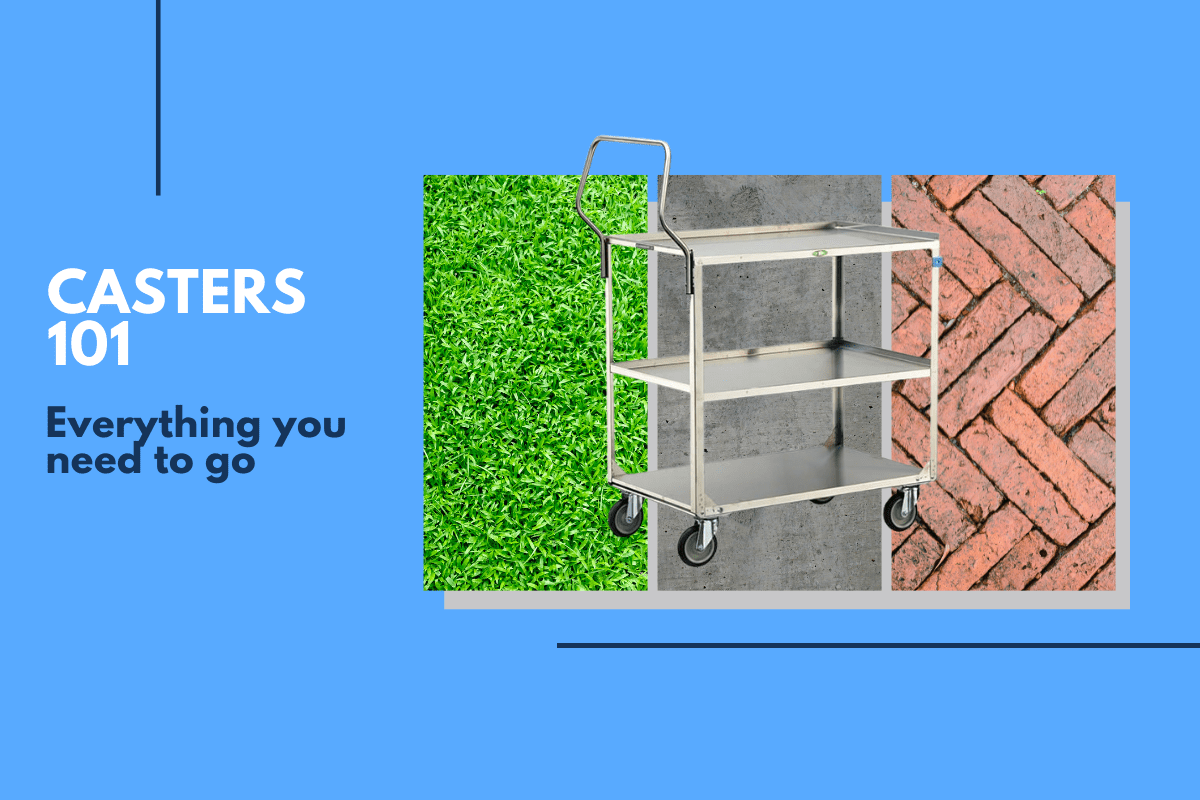
Casters 101: Everything You Need to Go And equipment that doesn’t have solid, durable casters might not be capable of reaching those far-off locations to achieve mobile service.
If we all agree that mobility and versatility are desired benefits in a foodservice operation, we can also agree that it’s casters that can help make everything go as it relates to mobile foodservice.
In most cases, whether it’s a mobile serving cart or a tray rack, the casters are the only things that are grounded, so it’s important to make sure the journey is as easy as possible.
Before we get into the details on casters, we need to consider the challenges presented when using mobile foodservice equipment.
Depending on the type of operation, units might need to be moved all the way across a property or even a college campus. There could be a combination of gravel paths, bumpy sidewalks, and even grass to navigate. And equipment that doesn’t have solid, durable casters might not be capable of reaching those far-off locations to achieve mobile service.
Let’s take a look at the different things to consider when looking for mobile foodservice equipment that gains its ability to go from casters.
CASTER COMPOSITION
Casters can be made of different materials, and each has its own unique set of benefits. Some are better for rolling on carpeted surfaces, while others are better for outdoor applications. If the goal is to move serving carts outside on sidewalks or driveways, fully pneumatic casters with treads are the best option. Semi-pneumatic casters are great for carpeted surfaces, while hard rubber casters are great for staying within a kitchen. For the best versatility, polyurethane casters are typically the best option.
CASTER SIZE
The next question is size. How big should casters be? The most common size of foodservice caster is five inches, but as a rule of thumb, the heavier the equipment being moved, the larger the caster. When casters are larger, it makes moving them easier, especially for heavy loads.
BEARINGS
While some smaller foodservice equipment and supplies such as mop buckets might have plastic bearings, heavy-duty equipment like serving stations and tray racks should have heavy-duty, metal ball bearings for adding durability.
ROTATION
For equipment that is being steered across a room or even across the property, it’s highly recommended that at least two of the casters have swivel capabilities to make movement easier. Steering a unit with four fixed wheels is nearly impossible, so using swivel casters makes tight turns a lot easier.
BRAKES
Brakes or stops are a great way to prevent accidents and keep units locked down in a single location. Especially when units are large and heavy, having the ability to slow them down when descending a hill, or being able to lock them in place once service begins, can be a great benefit. Brakes help.
Learn more about casters from an expert at Lakeside.
Book time with one of our representatives today and discover why we use heavy-duty casters on all of our equipment to ensure longevity and durability.
